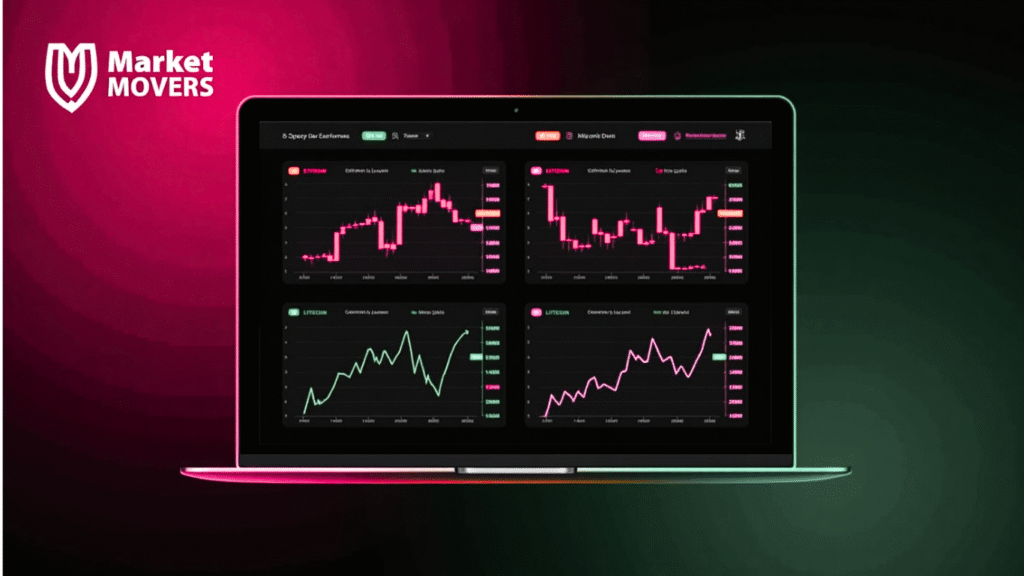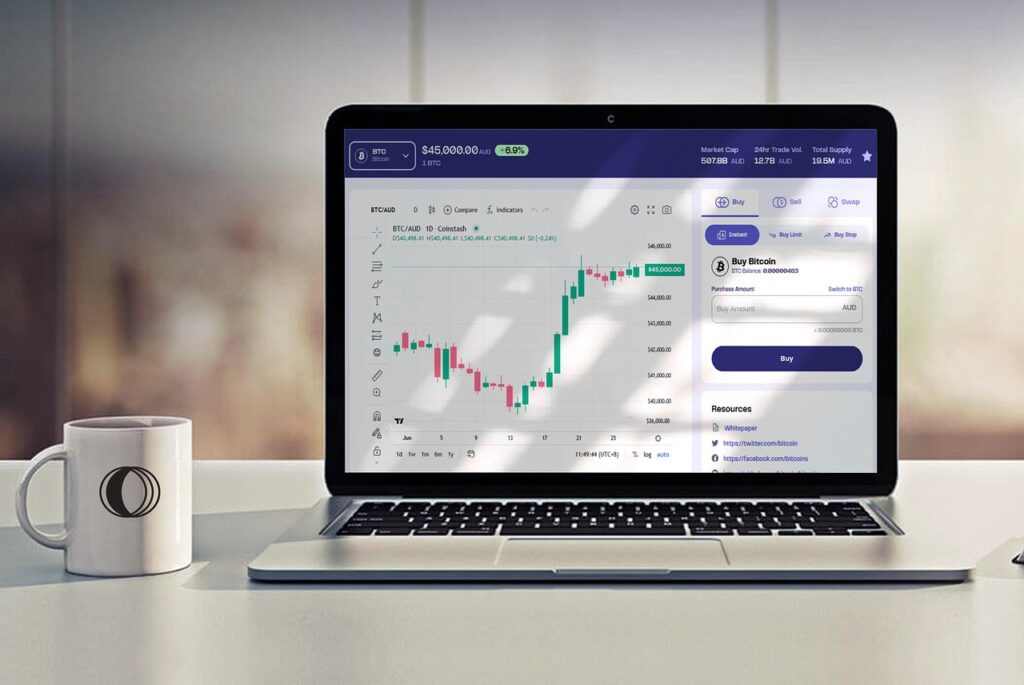Market Movers.
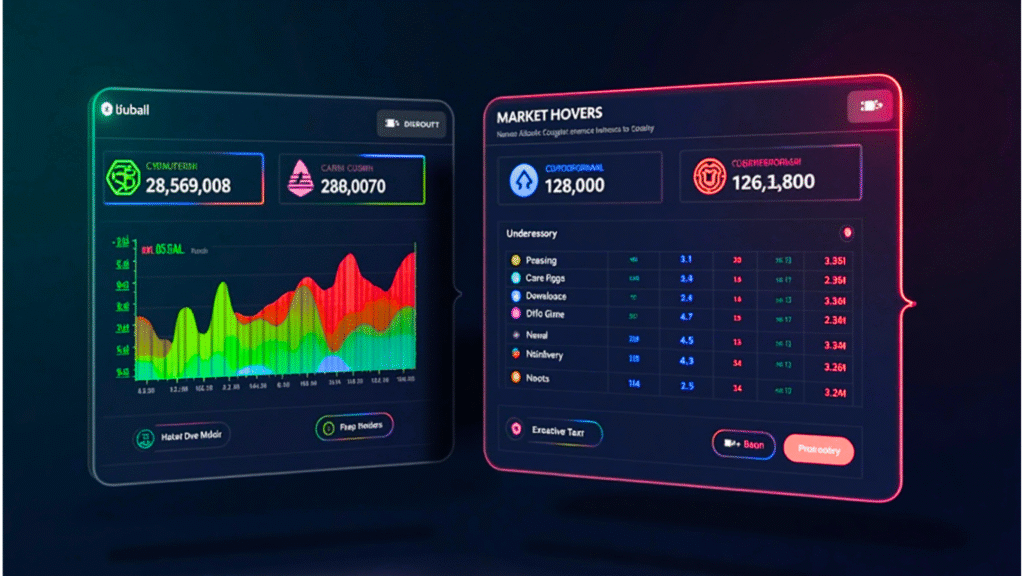
Introduction:
Why “Breaking Down Today’s Market Movers” Matters Right Now
Every trading day brings a new wave of market surprises. One moment, a tech stock surges 8% after beating earnings expectations. The next, a once-stable name drops sharply following a regulatory probe. These sudden shifts aren’t just noise they offer important clues into how capital is flowing and where investor sentiment is heading.
So, what exactly drives these changes? Often it’s a mix of breaking news, macroeconomic data, earnings releases, and sector momentum. Traders, investors, and analysts refer to these volatile players as “market movers.” These are the stocks and ETFs making the biggest impact on market indices either upward or downward based on real-time developments.
In this article, we’re breaking down today’s market movers by examining the top gainers and losers, volume trends, and the key catalysts behind their moves. We’ll cover:
- Which stocks are rising or falling and the reasons behind it
- What economic or company-specific news is triggering price movement
- Which sectors, such as AI, energy, or biotech, are gaining traction
- What these movements mean for short-term traders and long-term investors
Whether you’re monitoring crypto-linked stocks, high-growth tech companies, ETFs, or even meme names like GameStop and AMC, understanding the “why” behind each move gives you an edge.
Today’s markets are fast, reactive, and data-driven. By staying informed about the biggest movers, you’ll be in a stronger position to recognize opportunity and avoid risk.
What Are Market Movers?
In finance, market movers are stocks, sectors, or indices that experience significant price changes either upward or downward within a short period. These notable movements are typically driven by increased trading volume, important earnings reports, breaking news, or larger macroeconomic developments.
Knowing which assets are moving and the reasons behind their shifts is crucial for investors and traders aiming to spot opportunities or avoid risks in fast-paced markets.
What Qualifies as a Market Mover?
Several factors typically signal when a stock or asset qualifies as a market mover:
- Price movement exceeding 3–5% in a single trading session
- Unusual trading volume, often two to three times the average daily activity
- News or catalyst-driven action, including earnings releases, forward guidance, analyst upgrades/downgrades, or M&A announcements
- Sector-wide movement, influenced by changes in regulation, technology breakthroughs, or geopolitical events
These movers are tracked closely by day traders, institutional analysts, and investors looking to spot early trends or confirm momentum shifts.
Top Gainers & Losers Today (July 13, 2025)
| Stock | Price Move | Reason |
|---|---|---|
| $TSLA | +5.2% | Record Q2 deliveries beat expectations |
| $NVDA | -3.4% | AI chip slowdown warning from Taiwan supplier |
| $MSTR | +4.8% | Bitcoin ETF inflows boost sentiment |
| $PLTR | +3.7% | Government contract extension announced |
| $COIN | -2.5% | Regulatory uncertainty persists |
What’s Driving Today’s Market Moves?
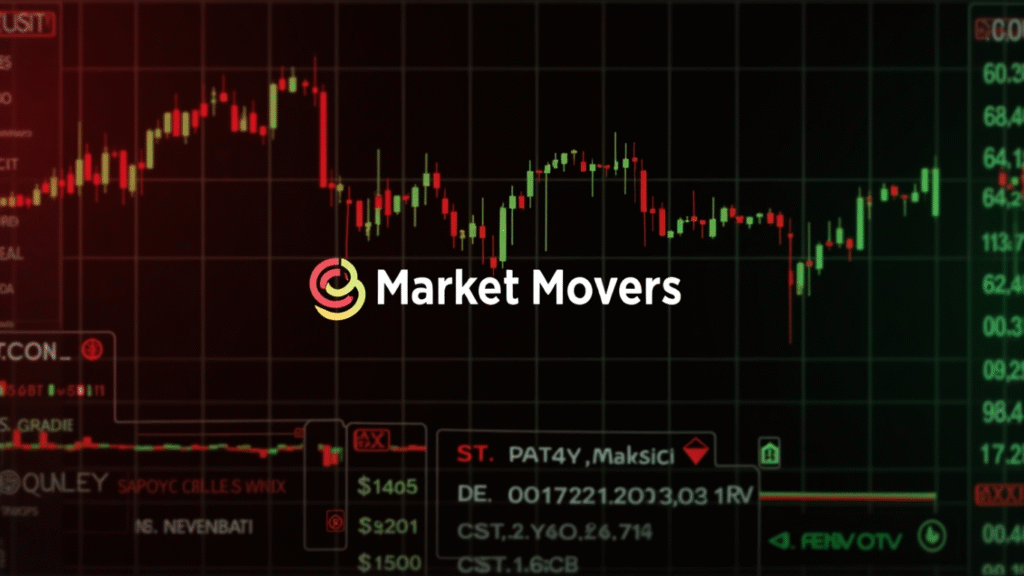
Economic Data Releases
This week, investors absorbed several important economic reports:
- June CPI report: Inflation eased to 2.8%, beating expectations
- Federal Reserve minutes: A dovish tone hinted at potential rate cuts in Q4
- Unemployment rate: Remained steady at 4.1%
Earnings Reports
Several S&P 500 companies released earnings before the market opened:
- PepsiCo (PEP): Earnings per share beat estimates by 6%, with shares rising 1.8%
- Delta Air Lines (DAL): Missed revenue estimates, leading to a 3.2% decline in stock price
Sector Rotation Watch
July has seen renewed focus on specific sectors:
- AI tokens and AI stocks: Experiencing a slight cooldown after a parabolic run in Q2
- Energy stocks: Gaining strength amid geopolitical tensions in the Middle East
- Biotech: Showing mixed performance as new FDA announcements are released
Relevant Keywords to Include
Use focus phrases such as breaking down today’s market movers catalyst, AI stock pullback, and sector rotation July 2025 throughout this section for SEO benefits.
Expert Analyst Commentary
Markets are in a ‘pause and reassess’ mode. With inflation showing signs of cooling and earnings coming in mixed, we’re seeing selective risk-on behavior especially in crypto-adjacent names like $COIN and $MSTR.”
Lena Kapoor, Chief Market Strategist, Apollo Alpha Capital
This combination of macroeconomic relief and selective risk appetite is driving sharp, asymmetric moves in stocks, particularly those tied to emerging themes like AI and decentralized finance (DeFi).
What It Means for Investors
Understanding today’s market movers isn’t just about watching stock prices fluctuate—it’s about interpreting these movements to make informed decisions that align with your investment goals. Market movers often signal shifts in investor sentiment, reveal emerging trends, or highlight risks that could impact your portfolio. By analyzing these key movers, investors can identify potential opportunities, manage risk more effectively, and position themselves strategically in a dynamic market environment.
Here’s how investors can use market mover insights effectively:
1. Stay Nimble and Adaptable
Market conditions can shift rapidly due to new economic data, geopolitical events, or unexpected earnings reports. Investors who remain flexible and ready to adjust their portfolios are better positioned to capitalize on opportunities or limit losses.
Adaptability doesn’t mean constantly buying and selling—it means staying alert to major catalysts and reassessing your exposure when conditions change. For example, a dovish Federal Reserve tone may boost tech and growth stocks, while hawkish commentary may favor defensive sectors like utilities or consumer staples.
Key takeaway: Stay informed, set alerts for critical news, and don’t hesitate to rebalance when momentum shifts.
2. Employ Risk Management Tools
High-volatility stocks particularly those in trending sectors like artificial intelligence (AI), biotechnology, or cryptocurrencies can deliver outsized gains. But with that upside comes the potential for sharp, sudden losses. This is where risk management tools become essential.
One of the most effective strategies is using trailing stop-loss orders. These allow you to set a dynamic exit point that moves with the stock’s price. If the price rises, your stop adjusts upward. If the price falls beyond your threshold, the position is automatically sold, locking in gains or limiting losses.
Other useful tools include:
- Position sizing: Never risk more than a small percentage of your total portfolio on a single high-volatility trade.
- Diversification: Spread exposure across uncorrelated sectors to reduce overall portfolio risk.
- Options hedging: Consider protective puts or covered calls in volatile conditions.
Key takeaway: In fast-moving markets, profits can evaporate quickly. A disciplined risk management approach helps protect your gains and your capital.
3. Focus on Emerging Themes and Sector Rotation
Rather than chasing individual stock spikes, savvy investors often focus on broader investment themes that are gaining traction in the market. These macro-level narratives such as artificial intelligence (AI), clean energy, cybersecurity, defense, or biotech innovation tend to drive sustained capital inflows over weeks or months.
For example, the AI boom in Q2 2025 created a wave of opportunity across semiconductors, cloud infrastructure providers, and AI-tied ETFs. Similarly, rising geopolitical tensions have fueled a rally in defense contractors and energy stocks, as investors anticipate increased government spending.
A critical tool for aligning with these trends is sector rotation the strategy of shifting capital between sectors based on where we are in the economic cycle or how sentiment is evolving. For instance:
- During early economic recovery phases, investors might favor cyclical sectors like industrials or consumer discretionary.
- In times of uncertainty or slowing growth, they might rotate into defensive sectors like healthcare, utilities, or dividend payers.
Key takeaway: Following emerging macro themes and adjusting your portfolio to ride sector momentum can offer more sustainable returns than short-term speculation.
4. Monitor ETFs as Market Barometers
Exchange-Traded Funds (ETFs) serve as powerful indicators of broader market sentiment. By tracking the price action of high-profile ETFs—especially those tied to specific sectors or investment themes investors can gain a clearer view of where capital is flowing and which narratives are gaining momentum.
Some key ETFs to watch include:
- QQQ (Invesco QQQ Trust): Tracks the Nasdaq-100 and is heavily weighted toward large-cap tech names like Apple, Microsoft, and Nvidia. A rally in QQQ often signals investor confidence in growth and innovation.
- ARKK (ARK Innovation ETF): Focuses on disruptive technologies including AI, genomics, and fintech. As a high-beta fund, ARKK is often viewed as a proxy for risk-on sentiment.
- BITO (ProShares Bitcoin Strategy ETF): Offers exposure to Bitcoin futures. Its performance reflects appetite for crypto and blockchain-related investments, especially when digital assets are under the spotlight.
- XLE (Energy Select Sector SPDR Fund) and XLV (Health Care Select Sector SPDR Fund): Useful for gauging defensive vs. cyclical rotations based on macroeconomic signals.
By monitoring these ETFs, investors can:
- Confirm broader sector trends (e.g., if semiconductors rise, check SMH or SOXX)
- Identify sentiment shifts between risk-on (e.g., ARKK, BITO) and risk-off (e.g., XLV, utilities ETFs) modes
- Track institutional behavior, as ETFs are commonly used in hedge fund and portfolio rebalancing strategies
Key takeaway: Watching ETF flows and price action helps provide a top-down view of the market, which can validate or challenge what’s happening at the individual stock level.
5. Stay Informed with Reliable Sources
In today’s fast-paced trading environment, timely and accurate information is essential. Relying on credible sources allows investors to make decisions based on facts not speculation or social media hype.
Subscribing to curated updates like our Market Movers Newsletter gives you:
- Daily summaries of the biggest gainers and losers
- Real-time analysis of breaking economic news, earnings reports, and sector shifts
- Expert commentary to help interpret market sentiment
- Early alerts on unusual volume or technical setups
Beyond newsletters, here are additional reliable platforms for tracking today’s market movers:
- Yahoo Finance – Top gainers/losers, live charts
- TradingView – Visual technical analysis tools
- Finviz – Heatmaps, filters, and screening tools
- MarketWatch – Market recap and news coverage
- Benzinga Pro – Real-time headlines and pre-market movers
Key takeaway: Staying informed through trusted, data-driven sources gives you a competitive edge and saves time while reducing noise and misinformation.
Breaking Down Today’s Market Movers: FAQs
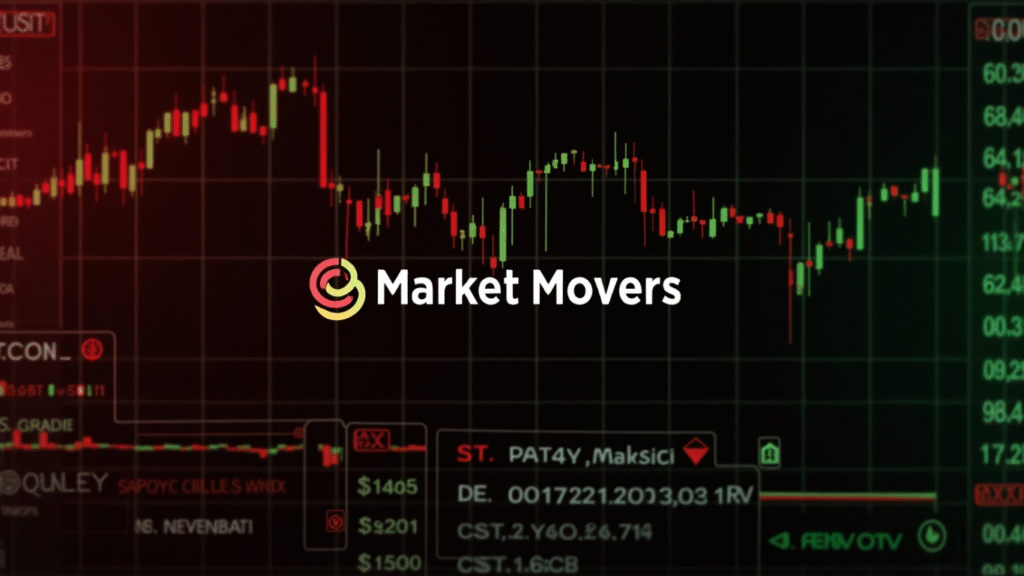
How often should I check market movers?
It’s advisable to check market movers daily, focusing on market open and close times when volume and volatility peak. This allows you to catch the most significant price movements and adjust your strategies accordingly.
Can retail investors act on market mover information effectively?
Yes, but retail investors should treat this information as part of a broader toolkit. Market movers indicate where action is happening but combining this with fundamental analysis, technical indicators, and personal risk tolerance is essential before making trades.
Are market movers primarily short-term phenomena?
Typically, yes. Market movers often reflect short-term sentiment swings, news reactions, or technical triggers. However, persistent moves can indicate the beginning of longer-term trends, especially when backed by solid fundamentals.
What platforms are best for tracking today’s market movers?
Some of the top platforms include:
- Yahoo Finance (Top Gainers and Losers sections)
- TradingView (for real-time charts and alerts)
- Finviz (heatmaps and stock screeners)
- MarketWatch (market news and movers)
- Benzinga Pro (real-time alerts and detailed analysis)
How do single-stock movers affect ETFs?
Because ETFs hold baskets of stocks, major price moves in large-cap holdings like Apple, Nvidia, or Tesla can significantly impact ETF performance. This effect can amplify sector or market-wide sentiment and is an important consideration when trading or investing in ETFs.
Conclusion: Breaking Down Today’s Market Movers in July 2025
Breaking Down Today’s Market Movers in July 2025 reveals a market shaped by shifting macroeconomic trends, sector rotations, and investor sentiment toward innovation and risk. From inflation data and earnings surprises to geopolitical tensions and AI momentum, every trading day offers signals worth interpreting.
For investors, the key isn’t just identifying which stocks are moving it’s understanding why they’re moving and how that aligns with your strategy. Whether you’re watching ETFs like QQQ and ARKK, rotating into strong sectors, or managing risk with stops and real-time data, today’s insights can help you stay one step ahead. see
